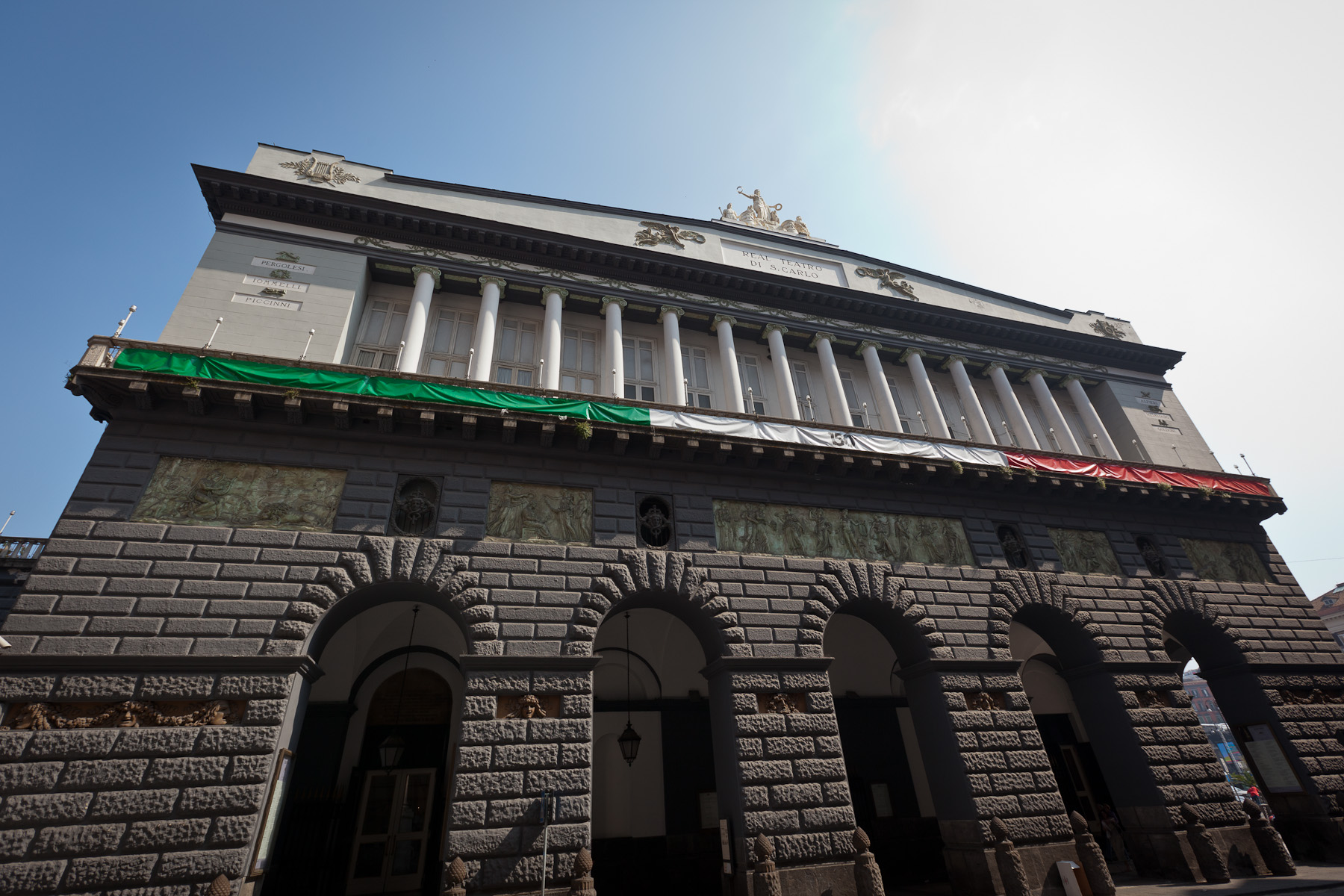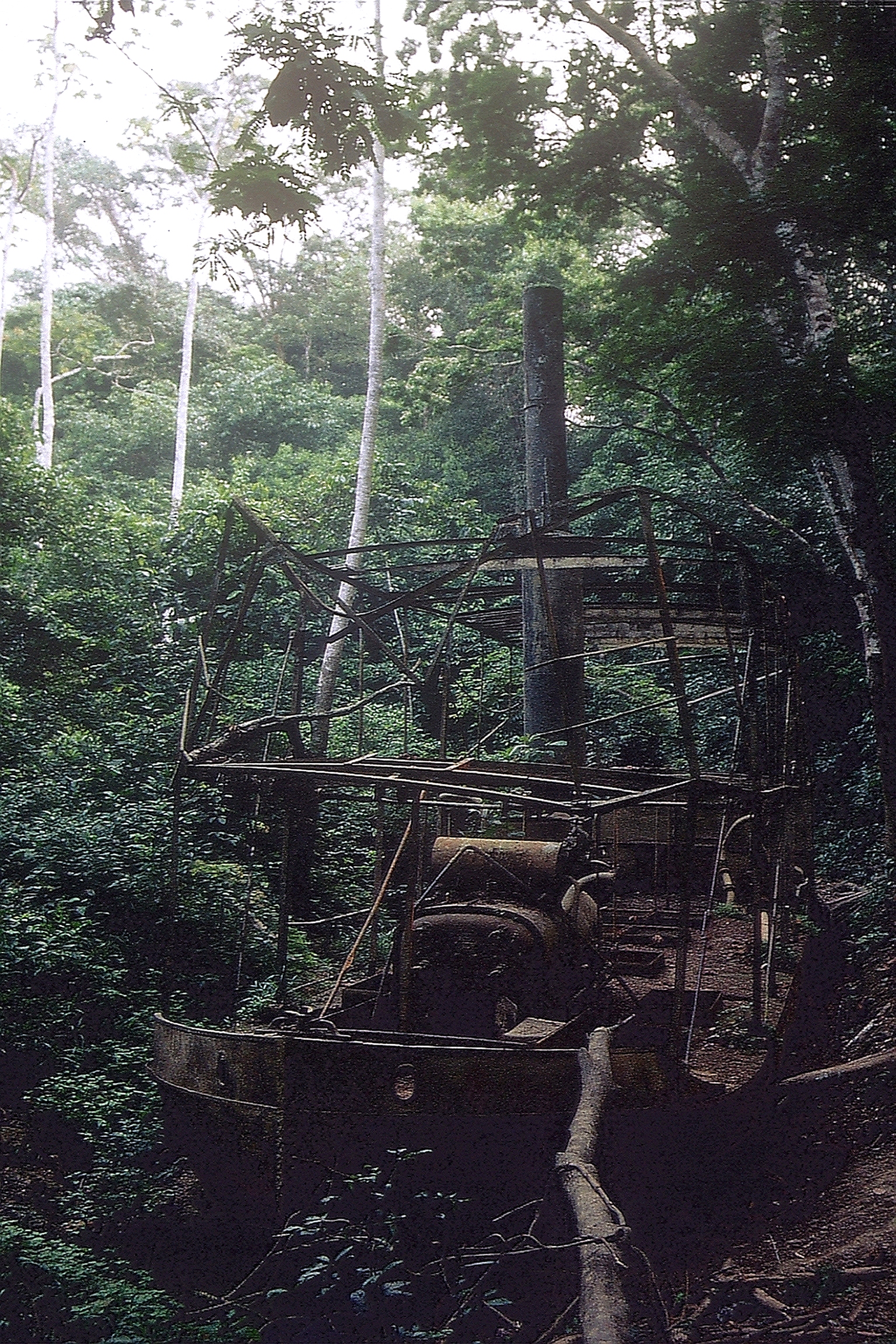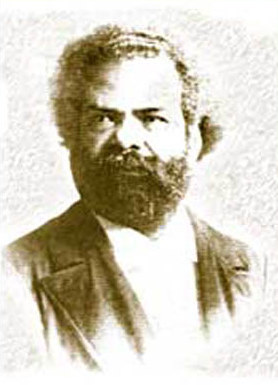|
Amazon Theatre
The Amazon Theatre () is an opera house located in Manaus, in the heart of the Amazon rainforest in Brazil. It is the location of the annual ''Festival Amazonas de Ópera'' (Amazonas Opera Festival) and the home of the Amazonas Philharmonic Orchestra which regularly rehearses and performs at the Amazon Theatre along with choirs, musical concerts and other performances. More than 120 years old, it represents the city's heyday during the rubber boom. It was chosen by the magazine ''Vogue'' as one of the most beautiful opera houses in the world. History The Amazonas Theatre was built during the Belle Époque at a time when fortunes were made in the rubber boom. Construction of the Amazon Theatre was first proposed in 1881 by a member of the local House of Representatives, Antonio Jose Fernandes Júnior, who envisioned a "jewel" in the heart of the Amazon rainforest. In 1882, the State legislature approved some limited financing, but this was considered insufficient. Later that ... [...More Info...] [...Related Items...] OR: [Wikipedia] [Google] [Baidu] |
Manaus
Manaus () is the capital and largest city of the Brazilian state of Amazonas. It is the seventh-largest city in Brazil, with an estimated 2020 population of 2,219,580 distributed over a land area of about . Located at the east center of the state, the city is the center of the Manaus metropolitan area and the largest metropolitan area in the North Region of Brazil by urban landmass. It is situated near the confluence of the Negro and Solimões rivers. It is the only city in the Amazon Rainforest with a population over 1 million people. The city was founded in 1669 as the Fort of São José do Rio Negro. It was elevated to a town in 1832 with the name of "Manaus", an altered spelling of the indigenous Manaós peoples, and legally transformed into a city on October 24, 1848, with the name of ''Cidade da Barra do Rio Negro'', Portuguese for "The City of the Margins of the Black River". On September 4, 1856, it returned to its original name. Manaus is located in the center of ... [...More Info...] [...Related Items...] OR: [Wikipedia] [Google] [Baidu] |
Opera House
An opera house is a theatre building used for performances of opera. It usually includes a stage, an orchestra pit, audience seating, and backstage facilities for costumes and building sets. While some venues are constructed specifically for operas, other opera houses are part of larger performing arts centers. Indeed, the term ''opera house'' is often used as a term of prestige for any large performing-arts center. History Italy is a country where opera has been popular through the centuries among ordinary people as well as wealthy patrons and it continues to have many working opera houses such as Teatro Massimo in Palermo (the biggest in Italy), Teatro di San Carlo in Naples (the world's oldest working opera house) and Teatro La Scala in Milan. In contrast, there was no opera house in London when Henry Purcell was composing and the first opera house in Germany, the Oper am Gänsemarkt, was built in Hamburg in 1678, followed by the Oper am Brühl in Leipzig in 1693, and t ... [...More Info...] [...Related Items...] OR: [Wikipedia] [Google] [Baidu] |
Italian Opera
Italian opera is both the art of opera in Italy and opera in the Italian language. Opera was born in Italy around the year 1600 and Italian opera has continued to play a dominant role in the history of the form until the present day. Many famous operas in Italian were written by foreign composers, including Handel, Gluck and Mozart. Works by native Italian composers of the 19th and early 20th centuries, such as Rossini, Bellini, Donizetti, Verdi and Puccini, are amongst the most famous operas ever written and today are performed in opera houses across the world. Origins ''Dafne'' by Jacopo Peri was the earliest composition considered opera, as understood today. Peri's works, however, did not arise out of a creative vacuum in the area of sung drama. An underlying prerequisite for the creation of opera proper was the practice of monody. Monody is the solo singing/setting of a dramatically conceived melody, designed to express the emotional content of the text it carries, whic ... [...More Info...] [...Related Items...] OR: [Wikipedia] [Google] [Baidu] |
Fitzcarraldo
''Fitzcarraldo'' () is a 1982 West German epic adventure-drama film written, produced and directed by Werner Herzog, and starring Klaus Kinski as would-be rubber baron, Brian Sweeney Fitzgerald, an Irishman known in Peru as Fitzcarraldo, who is determined to transport a steamship over a steep hill to access a rich rubber territory in the Amazon Basin. The film is derived from the historic events of Peruvian rubber baron Carlos Fitzcarrald and his real-life feat of transporting a disassembled steamboat over the Isthmus of Fitzcarrald. The film had a troubled production, chronicled in the documentary ''Burden of Dreams''. Herzog had his crew attempt to manually haul the 320-ton steamship up a steep hill, leading to three injuries. The film's original star Jason Robards became sick halfway through filming, so Herzog hired Kinski, with whom he had previously clashed violently during production of ''Aguirre, the Wrath of God'', ''Nosferatu the Vampyre'' and ''Woyzeck''. Their four ... [...More Info...] [...Related Items...] OR: [Wikipedia] [Google] [Baidu] |
Monument Abertura Dos Portos
Monument Abertura dos Portos (English: ''Opening of the Ports Monument'') is located in the Largo de São Sebastião, in front of the Amazon Theatre, in the city of Manaus, Brazil. It was inaugurated in 1900 to commemorate the liberation of the ports of the Amazon River to foreign trade, in 1866. History The monument was inaugurated in the first decade of the 1900s to commemorate the opening of the Amazon River ports for foreign trade in 1866. All material used on the monument was imported from Europe, especially Italy. The monument symbolizes the four corners of the world: Asia, America, Africa and Europe, each represented by a ship, with a seated boy on the prow of each ship. The monument displays the date of November 15, 1889, which commemorates the proclamation of the Republic of Brazil, and the name of José Cardoso Ramalho Júnior, at that time Governor of Amazonas State. In 1995, the square was fully restored by the prefecture of Manaus. Features The monument is an a ... [...More Info...] [...Related Items...] OR: [Wikipedia] [Google] [Baidu] |
Murano Glass
Venetian glass () is glassware made in Venice, typically on the island of Murano near the city. Traditionally it is made with a soda–lime "metal" and is typically elaborately decorated, with various "hot" glass-forming techniques, as well as gilding, enamel, or engraving. Production has been concentrated on the Venetian island of Murano since the 13th century. Today Murano is known for its art glass, but it has a long history of innovations in glassmaking in addition to its artistic fame—and was Europe's major center for luxury glass from the High Middle Ages to the Italian Renaissance. During the 15th century, Murano glassmakers created ''cristallo''—which was almost transparent and considered the finest glass in the world. Murano glassmakers also developed a white-colored glass (milk glass called ''lattimo'') that looked like porcelain. They later became Europe's finest makers of mirrors. During the High Middle Ages, Venice was originally controlled by the Eastern Ro ... [...More Info...] [...Related Items...] OR: [Wikipedia] [Google] [Baidu] |
Chandelier
A chandelier (; also known as girandole, candelabra lamp, or least commonly suspended lights) is a branched ornamental light fixture designed to be mounted on ceilings or walls. Chandeliers are often ornate, and normally use incandescent light bulbs, though some modern designs also use fluorescent lamps and recently LEDs. Classic chandeliers have arrays of hanging crystal prisms to illuminate a room with refracted light, while contemporary chandeliers assume a more minimalist design that does not contain prisms and illuminate a room with direct light from the lamps, sometimes also equipped with translucent glass covering each lamp. Modern chandeliers have a more modernized design that uses LEDs, and combines the elements of both classic and contemporary designs; some are also equipped with refractive crystal prisms or small mirrors. Chandeliers are distinct from pendant lights, as they usually consist of multiple lamps and hang in branched frames, whereas pendant lights h ... [...More Info...] [...Related Items...] OR: [Wikipedia] [Google] [Baidu] |
Crispim Do Amaral
Crispim do Amaral (1858 - December 17, 1911) was an actor, decorator, journalist, painter, draftsman, illustrator, and caricaturist in Brazil. He edited ''The Courier'' in 1879 in Para, Brazil and was its illustrator. He traveled to Paris in 1888. Back in Brazil he moved to Rio de Janeiro where he founded the magazines ''O Malho'', ''A Avenida'', ''O Pau'', and ''O Século''. He was born in Olinda. Amaral painted the curtain of the Amazon Theatre (debuted 1897) in Manaus titled "Meeting of the Waters". At the Brazilian National Exposition of 1908 he painted the interior murals of the Minas Geraes state pavilion including a series of images personifying agriculture, mineralogy, manufactures and the liberal arts. The building was designed by Rafael Rebecchi Rafael Rebecchi was an architect in Rio de Janeiro. He designed several buildings for the Brazilian National Exposition of 1908 in Rio de Janeiro. He was also involved with a rebuilding project at the Old Cathedral of ... [...More Info...] [...Related Items...] OR: [Wikipedia] [Google] [Baidu] |
Louis Quinze
The Louis XV style or ''Louis Quinze'' (, ) is a style of architecture and decorative arts which appeared during the reign of Louis XV. From 1710 until about 1730, a period known as the Régence, it was largely an extension of the Louis XIV style of his great-grandfather and predecessor, Louis XIV. From about 1730 until about 1750, it became more original, decorative and exuberant, in what was known as the Rocaille style, under the influence of the King's mistress, Madame de Pompadour. It marked the beginning of the European Rococo movement. From 1750 until the King's death in 1774, it became more sober, ordered, and began to show the influences of Neoclassicism. Architecture The chief architect of the King was Jacques Gabriel from 1734 until 1742, and then his more famous son, Ange-Jacques Gabriel, until the end of the reign. His major works included the Ecole Militaire, the ensemble of buildings overlooking the Place Louis XV (now Place de la Concorde; 1761-1770), and the P ... [...More Info...] [...Related Items...] OR: [Wikipedia] [Google] [Baidu] |
Ceramic Tile
A ceramic is any of the various hard, brittle, heat-resistant and corrosion-resistant materials made by shaping and then firing an inorganic, nonmetallic material, such as clay, at a high temperature. Common examples are earthenware, porcelain, and brick. The earliest ceramics made by humans were pottery objects (''pots,'' ''vessels or vases'') or figurines made from clay, either by itself or mixed with other materials like silica, hardened and sintered in fire. Later, ceramics were glazed and fired to create smooth, colored surfaces, decreasing porosity through the use of glassy, amorphous ceramic coatings on top of the crystalline ceramic substrates. Ceramics now include domestic, industrial and building products, as well as a wide range of materials developed for use in advanced ceramic engineering, such as in semiconductors. The word "''ceramic''" comes from the Greek word (), "of pottery" or "for pottery", from (), "potter's clay, tile, pottery". The earliest known ment ... [...More Info...] [...Related Items...] OR: [Wikipedia] [Google] [Baidu] |
Dome
A dome () is an architectural element similar to the hollow upper half of a sphere. There is significant overlap with the term cupola, which may also refer to a dome or a structure on top of a dome. The precise definition of a dome has been a matter of controversy and there are a wide variety of forms and specialized terms to describe them. A dome can rest directly upon a Rotunda (architecture), rotunda wall, a Tholobate, drum, or a system of squinches or pendentives used to accommodate the transition in shape from a rectangular or square space to the round or polygonal base of the dome. The dome's apex may be closed or may be open in the form of an Oculus (architecture), oculus, which may itself be covered with a roof lantern and cupola. Domes have a long architectural lineage that extends back into prehistory. Domes were built in ancient Mesopotamia, and they have been found in Persian architecture, Persian, Ancient Greek architecture, Hellenistic, Ancient Roman architecture, ... [...More Info...] [...Related Items...] OR: [Wikipedia] [Google] [Baidu] |
Carrara Marble
Carrara marble, Luna marble to the Romans, is a type of white or blue-grey marble popular for use in sculpture and building decor. It has been quarried since Roman times in the mountains just outside the city of Carrara in the province of Massa and Carrara in the Lunigiana, the northernmost tip of modern-day Tuscany, Italy. More marble has been extracted from the over 650 quarry sites near Carrara than from any other place. The pure white ''statuario'' grade was used for monumental sculpture, as "it has a high tensile strength, can take a high gloss polish and holds very fine detail".Kings By the late 20th century this had now run out, and the considerable ongoing production is of stone with a greyish tint, or streaks of black or grey on white. This is still attractive as an architectural facing, or for tiles. History Carrara marble has been used since the time of Ancient Rome then called the "Luna marble". In the Middle Ages, most of the quarries were owned by the Marquis ... [...More Info...] [...Related Items...] OR: [Wikipedia] [Google] [Baidu] |
.jpg)







